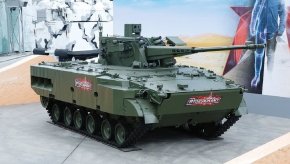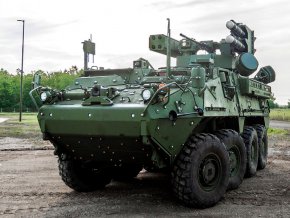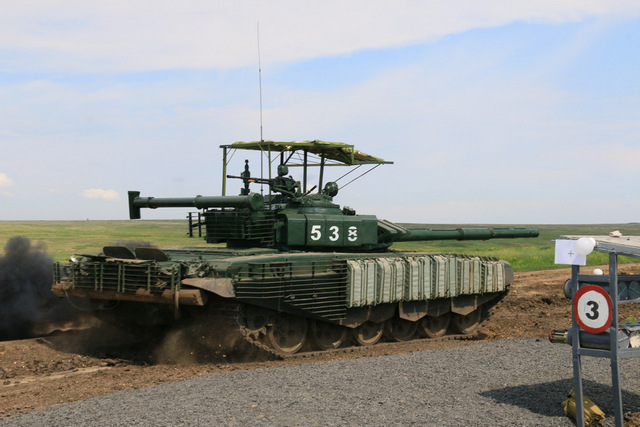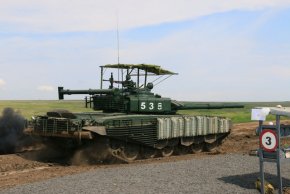Land Forces SHORAD
I've wanted to put this out for a while but I haven't had time. Currently Land Forces have 3 general types of air defense units.
ORBAT
They have an air defense artillery btln which is 3 batteries of 4 or 6 systems depending on whether they are part of a Land Forces Regiment or Brigade. One battery is AAA, usually Tunguska or Shilka, though in some cases ZU-23-2s are still used. One battery is a completely passive SAM system. Currently it's the Strela-10. One is a MANPADS unit, currently a mix of Igla and Verba.
They have an air-defense missile btln/rgt. While these sound like completely different units, in this case the btln is a 3-battery 4 TELAR per of either Osa or Tor SAMs. The rgt is just one battery bigger. The btln is for brigades, the rgt is for divisions, so 12 TELARs in bdes, 16 TELARs in divisions.
They have an air defense missile brigade which can come in two varieties. Either it's an S-300V (or V4), or it's a Buk-M1/2/3 unit. I'm not completely up to speed on their ORBAT.
News
A whole bunch of things are happening this year with Russian Land Forces SHORAD. The simplest and least contentious part is that Tor-M2 deliveries will continue, with a particularly large contract signed for GPV-2027. With the transition back to the division structure and each division having a single 4-battery regiment of 16 TELARs, it should be possible to practically eliminate the older Osa systems by the end of this GPV.
Russian troops are also getting the Gibka-S. Gibka is an Igla-S MANPADS mount for ships, the Gibka-S is a ground variant. It's a Tigr-M armored car with a 4-MANPADS launcher on the roof. It's unclear where this goes in the ORBAT or even if this is Igla or the newer Verba missile (presumably it can use either one). It might seem like a logical replacement for the Strela-10 but it's not. It's a smaller and shorter range missile, and the replacement planned for the Strela-10 is the Sosna-R, a more comparable system. It's tempting to suppose that the Gibka-S is meant for the VDV, and there are some indications that this might be the case, but the VDV is also getting a Sosna-R variant on a BMD-4 chassis as part of OKR Ptitselov. Another possibility though a troubling one, is that Russia continuing the trend of forming light units, like the 55th Motor-Rifles, where wheeled armored cars/trucks are their primary vehicle, and the Gibka-S is meant for them. But this would mean those units are significantly less capable, and I'm not sure why a Sosna variant can't be mounted on a Tayfun 6X6 MRAP for example. The Belarussians have managed to mount entire Osa SAMs on truck chassis. Final option, they want to replace infantry with MANPADS with vehicles with MANPADS. However, this doesn't fit either because they've also completed development of a Tayfun-PVO MRAP variant specifically meant to transport MANPADS teams, and it's meant to start deliveries in 2022 (technically some have already made it to the troops as part of experimental exploitation). And of course there is a new MANPADS called Metka being developed.
Next we have information of an air defense regiment of Pantsyr systems being created in Hakasiya. Remember the above ORBAT. The only context of air defense regiments that exists within land forces is a 16 TELAR 4 battery division air defense regiment. It's possible this formation is being stood up as part of the VKS air defense forces but they don't normally form regiments of SHORAD in any form. They instead attach a Pantsyr battery to an S-300/400 btln. You might think the Land Forces don't use the Pantsyr and you'd be correct, however.... a Land Forces Pantsyr-SV is being developed to be deployed in 2022. Technically a Pantsyr-SV already exists, and was exported to Algeria some years ago, so this is probably an updated version of it. Given the similar ranges and capabilities of the new Pantsyr-SM and the Tor-M2, it's possible the Land Forces will take to using the Pantsyr in place of the Tor in some units. Of course the timing is rather compressed, I wouldn't be surprised. It's also possible the Pantsyr-SV is taking the place of the Tunguska. However, recall the ORBAT, the AAA battery already has a replacement coming, the 2S38 Derivatsiya.
On a related note, a remote control set up is being developed for Pantsyrs, making it possible for the system to operate from its position, while the crew operates remotely from a concealed entrenchment.
Speculation
So I'm honestly at a loss as to what future Russian SHORAD ORBAT will look like for the Land Forces. It's possible that the Pantsyrs will either mirror the Tors, or will go to air defense brigades to partner with the bigger SAMs. The only real evidence against this is the West-2021 exercises where a Pantsyr system was used as part of regular combined arms mech formations. This suggests that the Pantsyr-SV is likelier to be meant for the air defense artillery btlns to replace Tungskas and Shilkas, except this leaves the Derivatsiya without a job. It's also possible that they will simply add a battery of Pantsyrs to the ORBAT, transitioning to a 4-battery btln, but this is purely speculation. I have no evidence for this.
A separate question on future of MANPADS remains. What is the Gibka-S meant for? I'm fuzzy on the structure of VDV air defense, I know they have MANPADS and ZU-23-2s. Presumably, eventually, they would get a 2S38 on a BMD-4 chassis. They also have regiments of Strela-10 systems at the division level (I don't think every division has one). Those would get replaced by the Sosna-R. So again on obvious slot for the Gibka. I suspect it getting used by some "light" motor-rifles units is the likeliest scenario.
 www.aviaport.ru
www.aviaport.ru

 radiosputnik.ria.ru
radiosputnik.ria.ru
 vk.com
vk.com
 vk.com
vk.com
 vk.com
vk.com
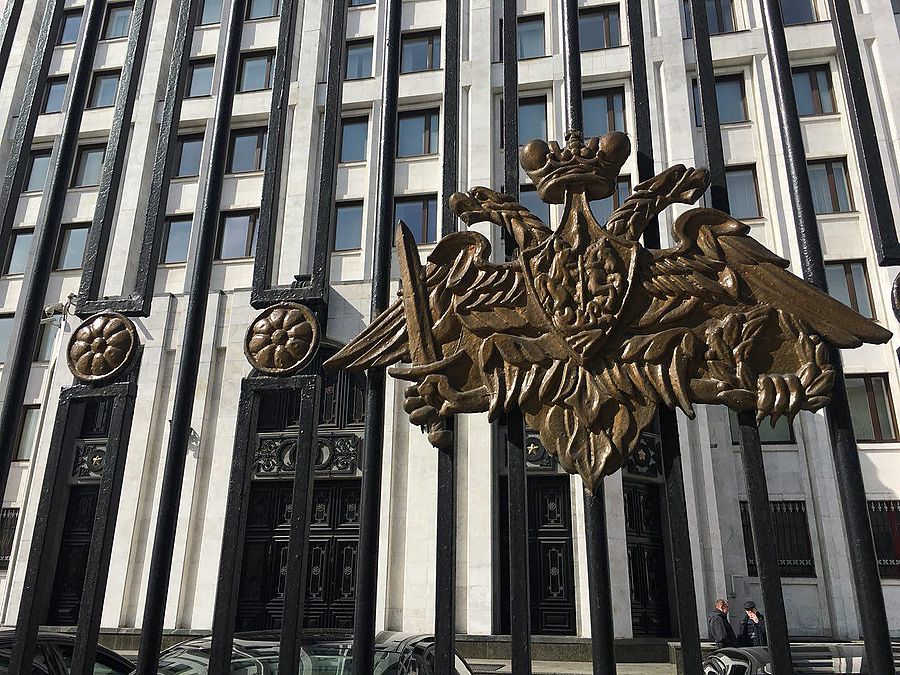
 vk.com
vk.com
 rg.ru
rg.ru

 tass.ru
tass.ru

 gurkhan.blogspot.com
gurkhan.blogspot.com
I've wanted to put this out for a while but I haven't had time. Currently Land Forces have 3 general types of air defense units.
ORBAT
They have an air defense artillery btln which is 3 batteries of 4 or 6 systems depending on whether they are part of a Land Forces Regiment or Brigade. One battery is AAA, usually Tunguska or Shilka, though in some cases ZU-23-2s are still used. One battery is a completely passive SAM system. Currently it's the Strela-10. One is a MANPADS unit, currently a mix of Igla and Verba.
They have an air-defense missile btln/rgt. While these sound like completely different units, in this case the btln is a 3-battery 4 TELAR per of either Osa or Tor SAMs. The rgt is just one battery bigger. The btln is for brigades, the rgt is for divisions, so 12 TELARs in bdes, 16 TELARs in divisions.
They have an air defense missile brigade which can come in two varieties. Either it's an S-300V (or V4), or it's a Buk-M1/2/3 unit. I'm not completely up to speed on their ORBAT.
News
A whole bunch of things are happening this year with Russian Land Forces SHORAD. The simplest and least contentious part is that Tor-M2 deliveries will continue, with a particularly large contract signed for GPV-2027. With the transition back to the division structure and each division having a single 4-battery regiment of 16 TELARs, it should be possible to practically eliminate the older Osa systems by the end of this GPV.
Russian troops are also getting the Gibka-S. Gibka is an Igla-S MANPADS mount for ships, the Gibka-S is a ground variant. It's a Tigr-M armored car with a 4-MANPADS launcher on the roof. It's unclear where this goes in the ORBAT or even if this is Igla or the newer Verba missile (presumably it can use either one). It might seem like a logical replacement for the Strela-10 but it's not. It's a smaller and shorter range missile, and the replacement planned for the Strela-10 is the Sosna-R, a more comparable system. It's tempting to suppose that the Gibka-S is meant for the VDV, and there are some indications that this might be the case, but the VDV is also getting a Sosna-R variant on a BMD-4 chassis as part of OKR Ptitselov. Another possibility though a troubling one, is that Russia continuing the trend of forming light units, like the 55th Motor-Rifles, where wheeled armored cars/trucks are their primary vehicle, and the Gibka-S is meant for them. But this would mean those units are significantly less capable, and I'm not sure why a Sosna variant can't be mounted on a Tayfun 6X6 MRAP for example. The Belarussians have managed to mount entire Osa SAMs on truck chassis. Final option, they want to replace infantry with MANPADS with vehicles with MANPADS. However, this doesn't fit either because they've also completed development of a Tayfun-PVO MRAP variant specifically meant to transport MANPADS teams, and it's meant to start deliveries in 2022 (technically some have already made it to the troops as part of experimental exploitation). And of course there is a new MANPADS called Metka being developed.
Next we have information of an air defense regiment of Pantsyr systems being created in Hakasiya. Remember the above ORBAT. The only context of air defense regiments that exists within land forces is a 16 TELAR 4 battery division air defense regiment. It's possible this formation is being stood up as part of the VKS air defense forces but they don't normally form regiments of SHORAD in any form. They instead attach a Pantsyr battery to an S-300/400 btln. You might think the Land Forces don't use the Pantsyr and you'd be correct, however.... a Land Forces Pantsyr-SV is being developed to be deployed in 2022. Technically a Pantsyr-SV already exists, and was exported to Algeria some years ago, so this is probably an updated version of it. Given the similar ranges and capabilities of the new Pantsyr-SM and the Tor-M2, it's possible the Land Forces will take to using the Pantsyr in place of the Tor in some units. Of course the timing is rather compressed, I wouldn't be surprised. It's also possible the Pantsyr-SV is taking the place of the Tunguska. However, recall the ORBAT, the AAA battery already has a replacement coming, the 2S38 Derivatsiya.
On a related note, a remote control set up is being developed for Pantsyrs, making it possible for the system to operate from its position, while the crew operates remotely from a concealed entrenchment.
Speculation
So I'm honestly at a loss as to what future Russian SHORAD ORBAT will look like for the Land Forces. It's possible that the Pantsyrs will either mirror the Tors, or will go to air defense brigades to partner with the bigger SAMs. The only real evidence against this is the West-2021 exercises where a Pantsyr system was used as part of regular combined arms mech formations. This suggests that the Pantsyr-SV is likelier to be meant for the air defense artillery btlns to replace Tungskas and Shilkas, except this leaves the Derivatsiya without a job. It's also possible that they will simply add a battery of Pantsyrs to the ORBAT, transitioning to a 4-battery btln, but this is purely speculation. I have no evidence for this.
A separate question on future of MANPADS remains. What is the Gibka-S meant for? I'm fuzzy on the structure of VDV air defense, I know they have MANPADS and ZU-23-2s. Presumably, eventually, they would get a 2S38 on a BMD-4 chassis. They also have regiments of Strela-10 systems at the division level (I don't think every division has one). Those would get replaced by the Sosna-R. So again on obvious slot for the Gibka. I suspect it getting used by some "light" motor-rifles units is the likeliest scenario.
"Тор" уместен: юг России прикрыли зенитными роботами-автоматами // АвиаПорт.Новости
Зенитные комплексы "Тор-М2" поступили на вооружение 20-й мотострелковой дивизии в Волгограде

Российская армия получит мобильные ракетные установки "Гибка-С"
Российские военные в 2022 году получат первые мобильные зенитно-ракетные комплексы "Гибка-С" сверхмалой дальности, передает РИА Новости со ссылкой на... Радио Sputnik, 06.01.2022
VK.com | VK
VK.com | VK
VK.com | VK

В 2022 году впервые поступят в войска комплекты ЗРК малой дальности "Гибка-С"
Взводные комплекты мобильного зенитного ракетного комплекса (ЗРК) противовоздушной обороны (ПВО) сверхмалой дальности
www.aex.ru
VK.com | VK
Комплексы ПВО "Гибка-С" поступят в войска в 2022 году
В части ПВО в 2022 году впервые поступят комплекты боевых машин "Гибка-С". Они позволят вести круглосуточное дежурство по ПВО и управлять огнем в режиме реального времени

В 2022 году завершатся работы над комплексом "Панцирь-СМ-СВ" с увеличенной зоной поражения
Комплекс будет иметь два типа зенитных управляемых ракет





